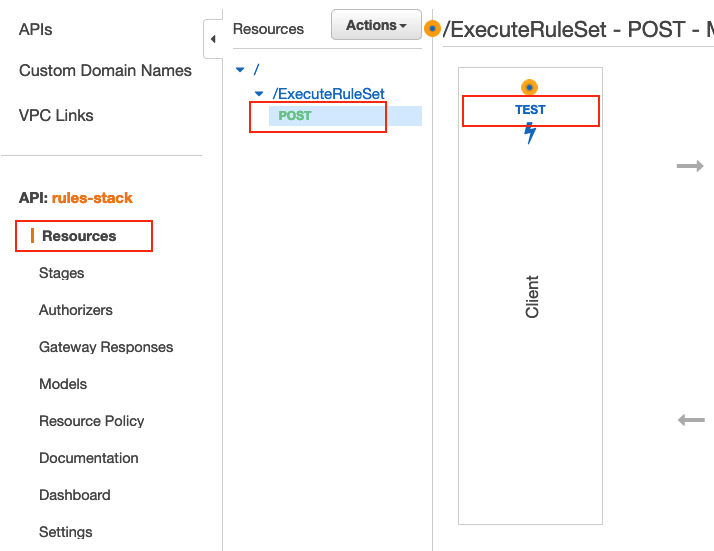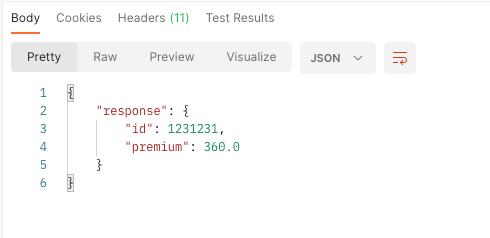AWS Compute Blog
Using AWS Step Functions and Amazon DynamoDB for business rules orchestration
This post is written by Vijaykumar Pannirselvam, Cloud Consultant, Sushant Patil, Cloud Consultant, and Kishore Dhamodaran, Senior Solution Architect.
A Business Rules Engine (BRE) is used in enterprises to manage business-critical decisions. The logic or rules used to make such decisions can vary in complexity. A finance department may have a basic rule to get any purchase over a certain dollar amount to get director approval. A mortgage company may need to run complex rules based on inputs (for example, credit score, debt-to-income ratio, down payment) to make an approval decision for a loan.
Decoupling these rules from application logic provides agility to your rules management, since business rules may often change while your application may not. It can also provide standardization across your enterprise, so every department can communicate with the same taxonomy.
As part of migrating their workloads, some enterprises consider replacing their commercial rules engine with cloud native and open-source alternatives. The motivation for such a move stem from several factors, such as simplifying the architecture, cost, security considerations, or vendor support.
Many of these commercial rules engines come as part of a BPMS offering that provides orchestration capabilities for rules execution. For a successful migration to cloud using an open-source rules engine management system, you need an orchestration capability to manage incoming rule requests, auditing the rules, and tracking exceptions.
This post showcases an orchestration framework that allows you to use an open-source rules engine. It uses Drools rules engine to build a set of rules for calculating insurance premiums based on the properties of Car and Person objects. This uses AWS Step Functions, AWS Lambda, Amazon API Gateway, Amazon DynamoDB, and open-source Drools rules engine to show this. You can swap the rules engine provided you can manage it in the AWS Cloud environment and expose it as an API.
Solution overview
The following diagram shows the solution architecture.
The solution comprises:
- API Gateway – a fully managed service that makes it easier to create, publish, maintain, monitor, and secure APIs at any scale for API consumers. API Gateway helps you manage traffic to backend systems, in this case Step Functions, which orchestrates the execution of tasks. For the REST API use-case, you can also set up a cache with customizable keys and time-to-live in seconds for your API data to avoid hitting your backend services for each request.
- Step Functions – a low code service to orchestrate multiple steps involved to accomplish tasks. Step Functions uses the finite-state machine (FSM) model, which uses given states and transitions to complete the tasks. The diagram depicts three states: Audit Request, Execute Ruleset and Audit Response. We execute them sequentially. You can add additional states and transitions, such as validating incoming payloads, and branching out parallel execution of the states.
- Drools rules engine Spring Boot application – runtime component of the rule execution. You set the Drools rule engine Spring Boot application as an Apache Maven Docker project with Drools Maven dependencies. You then deploy the Drools rule engine Docker image to an Amazon Elastic Container Registry (Amazon ECR), create an AWS Fargate cluster, and an Amazon Elastic Container Service (Amazon ECS) service. The service launches Amazon ECS tasks and maintains the desired count. An Application Load Balancer distributes the traffic evenly to all running containers.
- Lambda – a serverless execution environment giving you an ability to interact with the Drools Engine and a persistence layer for rule execution audit functions. The Lambda component provides the audit function required to persist the incoming requests and outgoing responses in DynamoDB. Apart from the audit function, Lambda is also used to invoke the service exposed by the Drools Spring Boot application.
- DynamoDB – a fully managed and highly scalable key/value store, to persist the rule execution information, such as request and response payload information. DynamoDB provides the persistence layer for the incoming request JSON payload and for the outgoing response JSON payload. The audit Lambda function invokes the DynamoDB put_item() method when it receives the request or response event from Step Functions. The DynamoDB table rule_execution_audit has an entry for every request and response associated with the incoming request-id originated by the application (upstream).
Drools rules engine implementation
The Drools rules engine separates the business rules from the business processes. You use DRL (Drools Rule Language) by defining business rules as .drl text files. You define model objects to build the rules.
The model objects are POJO (Plain Old Java Objects) defined using Eclipse, with the Drools plugin installed. You should have some level of knowledge about building rules and executing them using the Drools rules engine. The below diagram describes the functions of this component.
You define the following rules in the .drl file as part of the GitHub repo. The purpose of these rules is to evaluate the driver premium based on the input model objects provided as input. The inputs are Car and Driver objects and output is the Policy object, which has the premium calculated based on the certain criteria defined in the rule:
rule "High Risk"
when
$car : Car(style == "SPORTS", color == "RED")
$policy : Policy()
and $driver : Driver ( age < 21 )
then
System.out.println(drools.getRule().getName() +": rule fired");
modify ($policy) { setPremium(increasePremiumRate($policy, 20)) };
end
rule "Med Risk"
when
$car : Car(style == "SPORTS", color == "RED")
$policy : Policy()
and $driver : Driver ( age > 21 )
then
System.out.println(drools.getRule().getName() +": rule fired");
modify ($policy) { setPremium(increasePremiumRate($policy, 10)) };
end
function double increasePremiumRate(Policy pol, double percentage) {
return (pol.getPremium() + pol.getPremium() * percentage / 100);
}
Once the rules are defined, you define a RestController that takes input parameters and evaluates the above rules. The below code snippet is a POST method defined in the controller, which handles the requests and sends the response to the caller.
@PostMapping(value ="/policy/premium", consumes = {MediaType.APPLICATION_JSON_VALUE, MediaType.APPLICATION_XML_VALUE }, produces = {MediaType.APPLICATION_JSON_VALUE, MediaType.APPLICATION_XML_VALUE})
public ResponseEntity<Policy> getPremium(@RequestBody InsuranceRequest requestObj) {
System.out.println("handling request...");
Car carObj = requestObj.getCar();
Car carObj1 = new Car(carObj.getMake(),carObj.getModel(),carObj.getYear(), carObj.getStyle(), carObj.getColor());
System.out.println("###########CAR##########");
System.out.println(carObj1.toString());
System.out.println("###########POLICY##########");
Policy policyObj = requestObj.getPolicy();
Policy policyObj1 = new Policy(policyObj.getId(), policyObj.getPremium());
System.out.println(policyObj1.toString());
System.out.println("###########DRIVER##########");
Driver driverObj = requestObj.getDriver();
Driver driverObj1 = new Driver( driverObj.getAge(), driverObj.getName());
System.out.println(driverObj1.toString());
KieSession kieSession = kieContainer.newKieSession();
kieSession.insert(carObj1);
kieSession.insert(policyObj1);
kieSession.insert(driverObj1);
kieSession.fireAllRules();
printFactsMessage(kieSession);
kieSession.dispose();
return ResponseEntity.ok(policyObj1);
}
Prerequisites
- OpenJDK 17.
- Python version 3.9.
- Apache Maven version 3.8.4.
- Docker version 20.10.12.
- Postman to test your API.
- Set up AWS CLI to allow you to deploy your resources.
- Set up the AWS SAM CLI to deploy your resources.
- Have the appropriate AWS credentials for interacting with resources in your AWS account.
Solution walkthrough
- Clone the project GitHub repository to your local machine, do a Maven build, and create a Docker image. The project contains Drools related folders needed to build the Java application.
git clone https://github.com/aws-samples/aws-step-functions-business-rules-orchestration cd drools-spring-boot mvn clean install mvn docker:build - Create an Amazon ECR private repository to host your Docker image.
aws ecr create-repository —repository-name drools_private_repo —image-tag-mutability MUTABLE —image-scanning-configuration scanOnPush=false - Tag the Docker image and push it to the Amazon ECR repository.
aws ecr get-login-password --region us-east-1 | docker login --username AWS --password-stdin <<INSERT ACCOUNT NUMBER>>.dkr.ecr.us-east-1.amazonaws.com docker tag drools-rule-app:latest <<INSERT ACCOUNT NUMBER>>.dkr.ecr.us-east-1.amazonaws.com/drools_private_repo:latest docker push <<INSERT ACCOUNT NUMBER>>.dkr.ecr.us-east-1.amazonaws.com/drools_private_repo:latest - Deploy resources using AWS SAM:
cd .. sam build sam deploy --guided
Verifying the deployment
Verify the business rules execution and the orchestration components:
- Navigate to the API Gateway console, and choose the rules-stack API.

- Under Resources, choose POST, followed by TEST.

- Enter the following JSON under the Request Body section, and choose Test.
{ "context": { "request_id": "REQ-99999", "timestamp": "2021-03-17 03:31:51:40" }, "request": { "driver": { "age": "18", "name": "Brian" }, "car": { "make": "honda", "model": "civic", "year": "2015", "style": "SPORTS", "color": "RED" }, "policy": { "id": "1231231", "premium": "300" } } } - The response received shows results from the evaluation of the business rule “High Risk“, with the premium representing the percentage calculation in the rule definition. Try changing the request input to evaluate a “Medium Risk” rule by modifying the age of the driver to 22 or higher:

- Optionally, you can verify the API using Postman. Get the endpoint information by navigating to the rule-stack API, followed by Stages in the navigation pane, then choosing either Dev or Stage.
- Enter the payload in the request body and choose Send:

- The response received is results from the evaluation of business rule “High Risk“, with the premium representing the percentage calculation in the rule definition. Try changing the request input to evaluate a “Medium Risk” rule by modifying the age of the driver to 22 or higher.

- Observe the request and response audit logs. Navigate to the DynamoDB console. Under the navigation pane, choose Tables, then choose rule_execution_audit.

- Under the Tables section in the navigation pane, choose Explore Items. Observe the individual audit logs by choosing the audit_id.

Cleaning up
To avoid incurring ongoing charges, clean up the infrastructure by deleting the stack using the following command:
sam delete
Delete the Amazon ECR repository, and any other resources you created as a prerequisite for this exercise.
Conclusion
In this post, you learned how to leverage an orchestration framework using Step Functions, Lambda, DynamoDB, and API Gateway to build an API backed by an open-source Drools rules engine, running on a container. Try this solution for your cloud native business rules orchestration use-case.
For more serverless learning resources, visit Serverless Land.


